
Sony Nex vg-10, 35mm
Introduction
As I continued going to my weekly meeting at the association for mycological studies, I arrived Monday two weeks ago, only to be refused to entry. I guess everyone needs to follow regulation and protocol now? Due to the new regulations in Switzerland I needed to submit a vaccination or test certificate. As i can't participate there regularly anymore out or principle, I will unfortunately reduce the frequency of these protocol posts. Specially because it goes against my principles to be coerced into undergoing a medical procedure or in this case driven to social exclusion or denied participation due to my indifference in opinion. I guess there are still a million other things I don't need a certificate for? Maybe like going to the forest? It will not deter my passion for mushroom hunting. I shall continue to try to remember and identify them. I apologise for not being able to do our weekly mushroom protocol last week. In my previous and also my first post titled: Mushroom Protocol 02 We went over 3 mushrooms.
Namely:
- The Boletus calopus, bitter beech bolete or scarlet-stemmed bolete
- The Hygrocybe punicea, Crimson or waxycap
- The Hypholoma fasciculare, sulphur tuft
So far we covered:
- The Scleroderma citrinum or earthball
- The Craterellus cornucopioides or horn of plenty
- The lycoperdon or puffball
- The Boletus calopus, bitter beech bolete or scarlet-stemmed bolete
- The Hygrocybe punicea, Crimson or waxycap
- The Hypholoma fasciculare, sulphur tuft
Can you guess any one of the following mushroom in this basket?
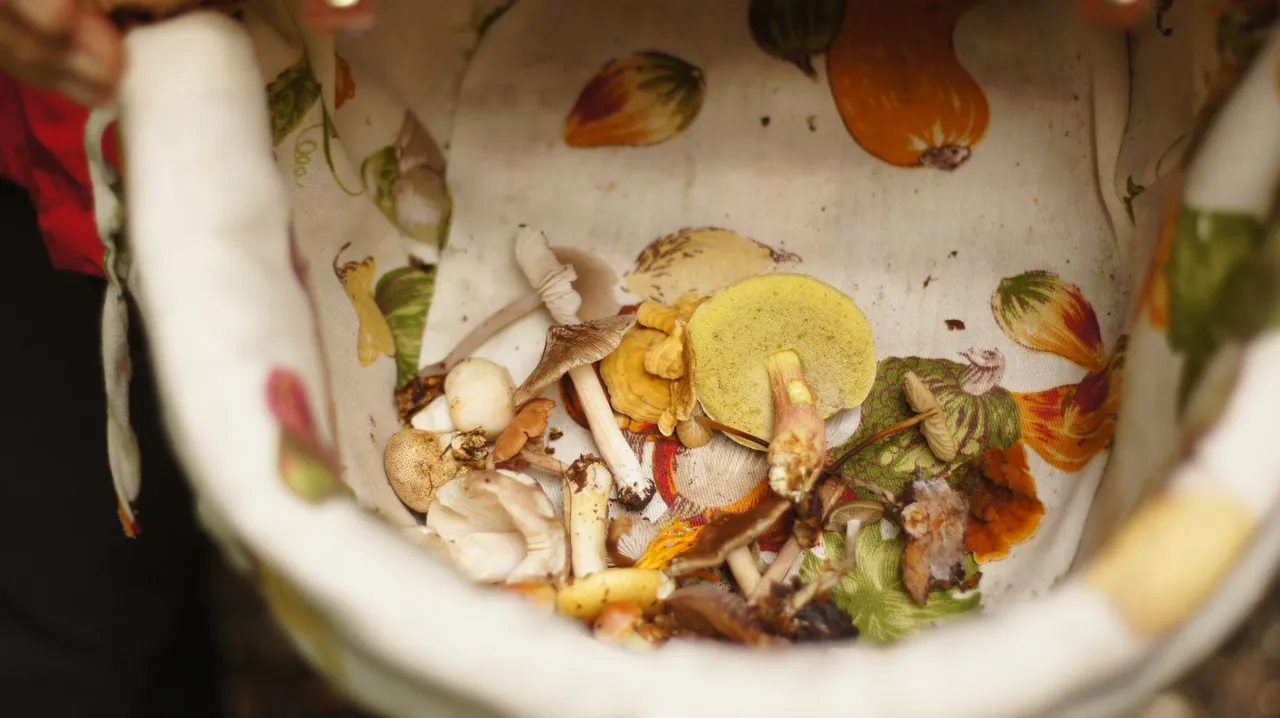
Any one see anything they recognise in the basket?
Hericium Erinaceus:
The above mushroom in my previous post is a Hericium Erinaceus also known as Lion's Mane. It can usually be found on dead Beech trees. At times even a bit up the trunk. I once had to get one down using a stick. This mushroom is saprophytic and is known for it's medicinal properties of relieving Alzheimer's disease and also neuro degenerative diseases. It can improve memory and neuromotor functions. It's something I have also tested over a period of time and actually had achieved significant results with.
Mushrooms
The following were reviewed and discussed in a regular mycological study group I go to weekly.
Gyroporus castaneus, chestnut bolete
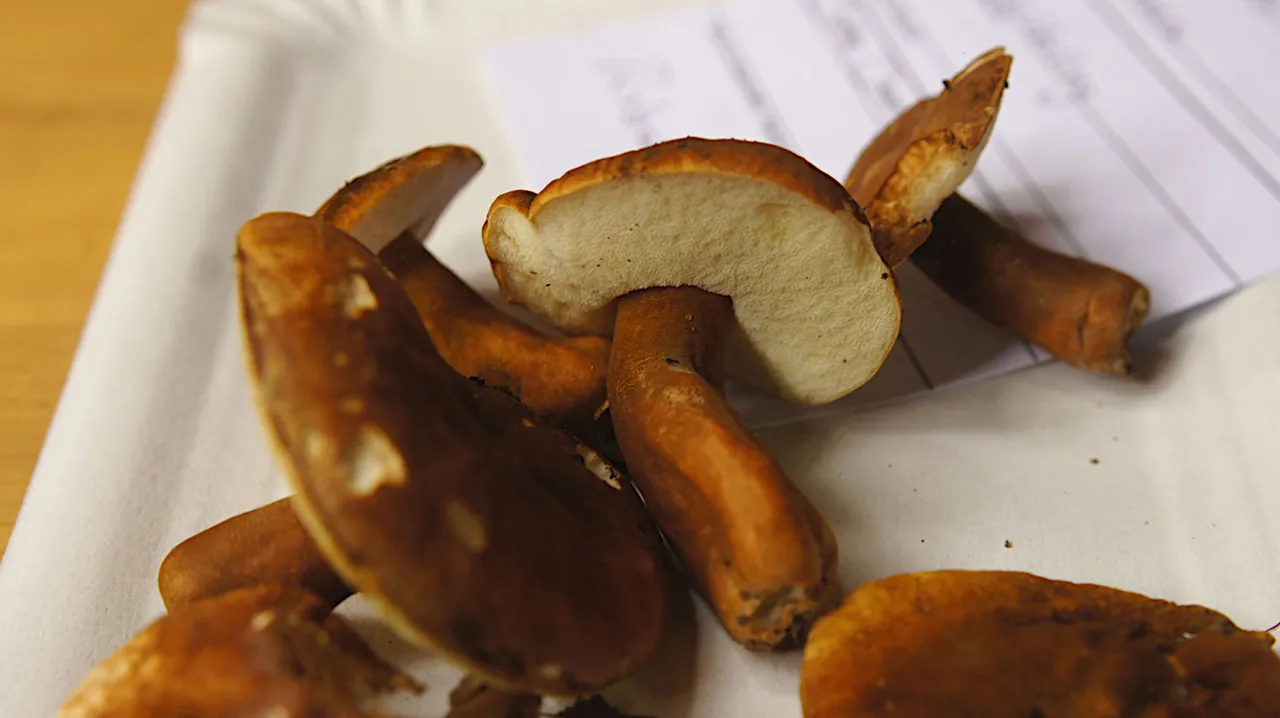
| Class | Agaricomycetes |
| Family | Gyroporaceae |
| Order | Boletales |
| Scientific Name | Gyroporus castaneus |
| Common Name | chestnut bolete |
| Appearence | Cap is about 3 to 10 cm in diameter.They look clean when fresh. The cap comes off really easy. They darken quickly when pressed. the often splitting cap margin, and its pale yellow spore print. |
| Type | Mycorrhizal |
| Odeur | Spicy and very tasty smell |
| Culinary | edible |
| Taste | Mild tasting, very delicious |
| Medicinal properties | Anti-tumor effects Polysaccharides extracted from the mycelial culture of G. castaneus and administered intraperitoneally into white mice at a dosage of 300 mg/kg inhibited the growth of Sarcoma 180 and Ehrlich solid cancers by 80% and 70%, respectively (Ohtsuka et al., 1973). Source |

Stabilomyces Stabilaceus, old man of the woods
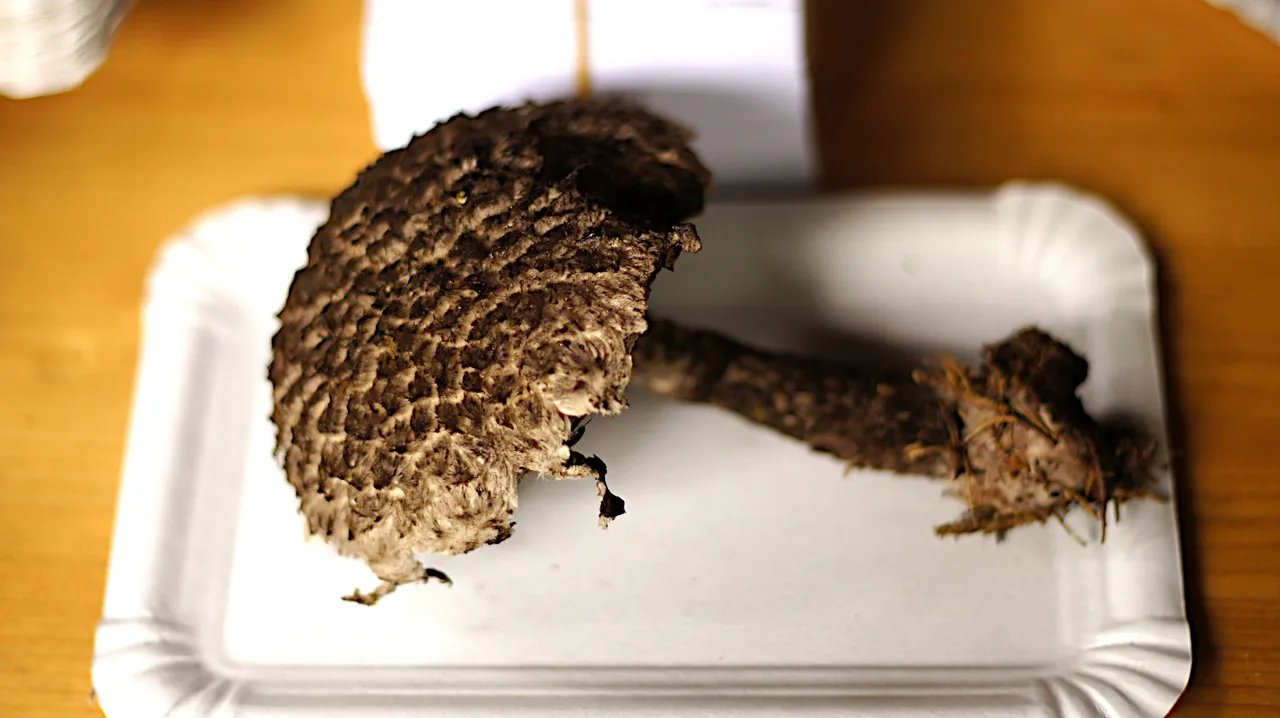
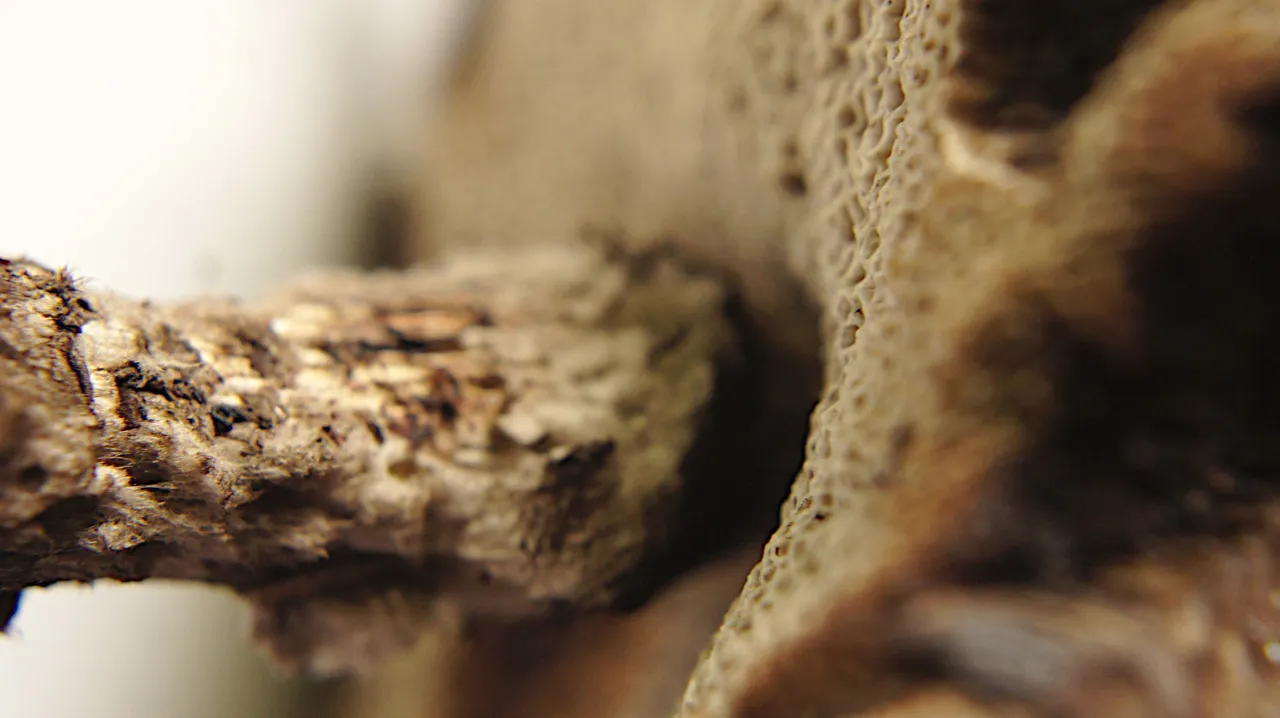
| Class | Agaricomycetes |
| Family | Boletaceae |
| Order | Boletales |
| Division | Basidiomycota |
| Scientific Name | Gyroporus castaneus |
| Common Name | Strobilomyces floccopus/old man of the woods |
| Appearence | dark blood red cap with irregular downturned margin. Becomes yellowish when mature. Gills are initially yellow and gradually become red when the fruit body ages. The stem is 5 to 15cm long and 1.3 to 2cm in diameter, is coarsely fibrillose, red on to and shading into yellow. |
| Habitat | Found in groups in usually in coniferous forests and low mountain ranges |
| Type | Mycorrhizal |
| Odeur | undefined |
| Culinary | inedible |

Hydnum repandum, hedgehog mushroom:
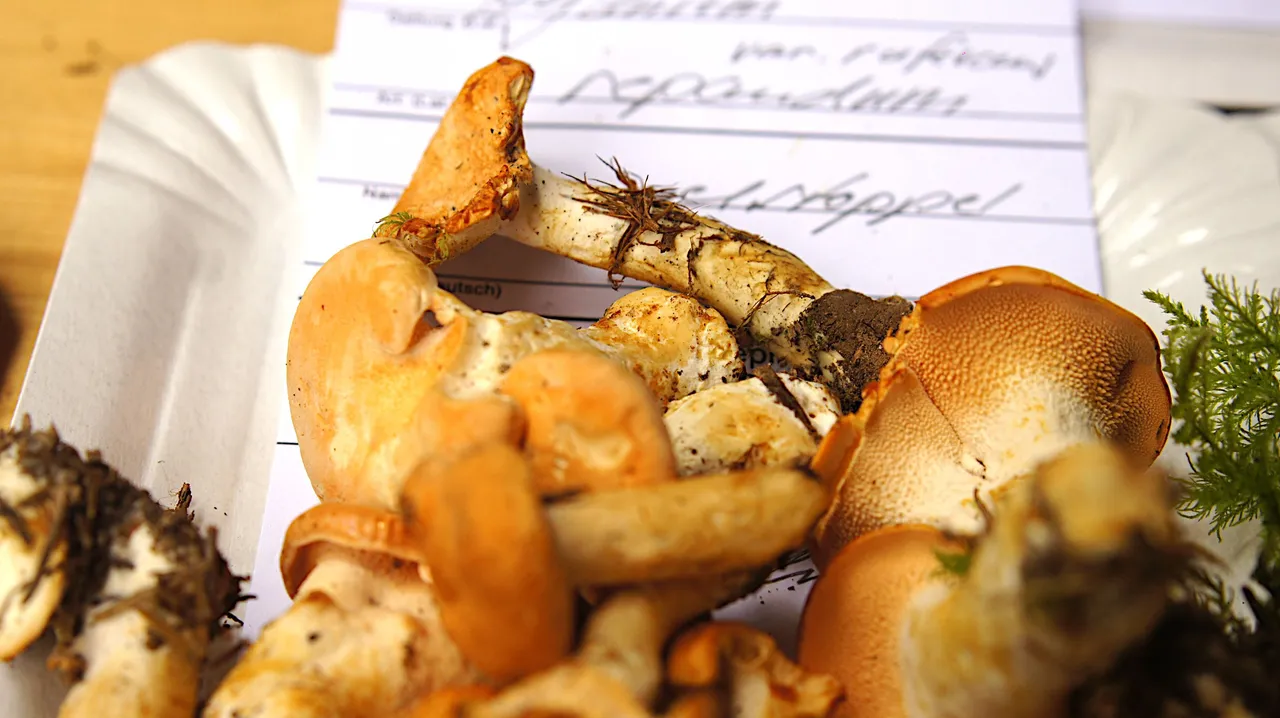
| Class | Agaricomycetes |
| Scientific Name | Hydnum repandum |
| Family | Hydnaceae |
| Common Name | sweet tooth, wood hedgehog or hedgehog mushroom |
| Appearence | The cap or pileus isorange-, yellow- or tan-colored and can be up to 16cm. It's shape is often irregular. Mature specimens crack quickly. |
| Habitat | These are Ectomycorrhizal; they form rings among floors with moisture and leaf litter and are usually found on mossy forest floors. |
| Odeur | mild |
| Culinary | edible |
| Taste | tastes good on toast apparently. I like it in asian dishes or with herbs |
| Medicinal properties |
Hedgehog Mushroom Benefits & Medicinal properties
The main benefit of eating hedgehog is nutritional. The mushroom is low in fat and calories, high in protein, and is rich in several dietary minerals, especially iron and manganese, though it’s a very good source of magnesium, calcium, and zinc as well . Many people find it delicious, and it can be prepared in many ways, so it is a rather appealing form of health food.
Possible medicinal benefits include anti-tumor activity and anti-microbial activity, though these have not yet been extensively researched. Repandiol, a chemical substance isolated from hedgehog mushroom, shows strong anti-tumor activity in vitro . Several extracts made from the mushroom also proved at least partially effective against test microorganisms in culture . These substances have not been studied in human clinical trials, and while hedgehog is usually referred to as an “edible and medicinal mushroom,” it is rarely included in commercially available mushroom supplement blends. Anti-tumor effects An extract of the culture mycelia showed 70% inhibition against Sarcoma 180 solid cancer in mice, while extracts from the fruit bodies showed 90% inhibition against both Sarcoma 180 and Ehrlich solid cancer in mice (Ohtsuka et al., 1973). Furthermore, the compound repandiol described above showed potent cytotoxic activity against a variety of tumor cell types, especially colon adenocarcima cells, for which its IC50 is 0.30 (Takahashi et al., 1992). Antimicrobial activity In a study of antimicrobial activity using the disk-diffusion method, it was shown that a chloroform extract of the hedgehog mushroom had mild antibiotic activity against Enterobacter aerogenes, Staphylococcus aureus, Staphylococcus epidermidis and Bacillus subtilis, while the ethanol extract had mild activity against only Bacillus subtilis (Yamach and Bilgili, 2006). Source |
Conclusions
I tell myself that I will always find edible mushrooms, and I do. At times I go to some forests and so many edible mushrooms have been picked or plucked turned on it's cap and just left there. I used to think I'm too late and all the good ones are gone. The interesting part about this thought is, that there is always a bushy place or a part of the forest where no one went before. Or maybe where I will find my mushroom jackpot spot.
Previous Posts on Mushrooms:

Posts of Wild Herbs:


Graffiti of vanishing
Dong Chang 东厂
aka Rane

'If a dangerous situation teaches me to deviate and make different choices, it also teaches me to adapt. If I restrict my body from the input of pathogens and bacteria, it misses out on versatility of input to make it stronger. If I give it something already prepared, altered or synthesised to do the job, my bodies own mechanisms becomes redundant. ' - @yangyanje
#naturalmedicine, #spirituality, #hive-120586, #hive-163521, #hive-110490, #hive-166168, #fungilovers, #amazingnature, #naturalhealth, #food, #hive-141827
 Visit cleanplanet.io
Visit cleanplanet.io

